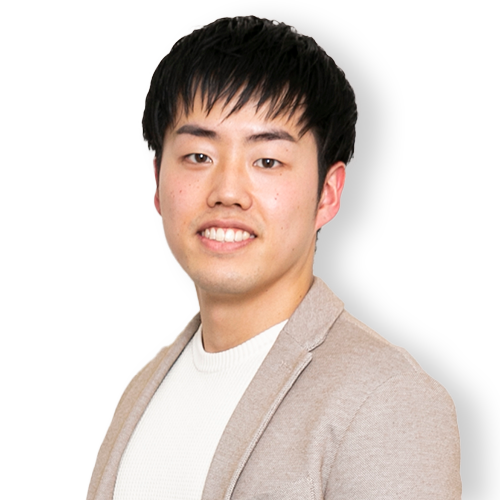Developing new games at a company that offers ample freedom and expertise in various game genres
At university, I did research in communications and was part of the planning committee for the school festival. The experience of organizing fun events for large crowds of people made me want to pursue a career where I could share something I'd thought up with the world. Ultimately, that led me to become a game designer. I found myself drawn to SEGA because of its extensive portfolio—from toys to mobile, console, and arcade games—and joined as an intern initially. During my time there, I found every game designer quirky and fascinating; they'd always light up with joy and pride when they talked about the games they worked on. I made up my mind to officially join SEGA when I realized that I'd be able to push my limits alongside people like them.
A dynamic environment where creators collaborate together
Since joining the company, my duties as a game designer have been focused on designing battles for the "Like a Dragon" series. Once I come up with an idea for a battle, I have to decide the setting for the fight, the script, the parameters and details of the enemy characters involved, and how the performances should be directed. After summarizing everything into a document, production begins once I coordinate with the artists, programmers, and other relevant team members. My proposal goes through the hands of many creators before becoming a part of the game. Seeing the finished product in action gives me an immense sense of accomplishment. I was tasked with developing content in my first year at SEGA, and I still remember how moved I felt when I first saw it in-game.

These days, once a game is released, we can see players in real-time enjoying it on Let's Play videos and over social media. Sometimes, I'll check out some Let's Play videos of games I've worked on. Seeing the players having a blast with the game is a reminder that I chose the right profession.
SEGA encourages diversity and growth
One of SEGA's fortes is that it develops games across a wide range of genres. Even though my team specializes in turn-based RPGs for consoles, many of our team members have experience working on arcade and mobile games. We bring each of those experiences to the table when designing a game. We have a very collaborative and organic process that I believe is unique to SEGA because it delves into so many different genres; one person's ideas may inspire someone else to come up with something, and that may in turn inspire someone else. Every employee offers their own unique perspective. The company respects each person's idiosyncrasies and actively seeks ways to channel them. SEGA will always reward passion with ample opportunities. If you're worried whether you'd be a good match for a position here, I encourage you to give it a try.

I still have much room for growth as a game designer, so my main focus is to improve my skills as I undertake new projects. I hope to one day grow into a full-fledged game designer. The emergence of new technologies, such as XR, that are able to blur the lines between reality and fiction will transform the way we live our lives. Game designers of the future will be challenged to find ways of creating engaging and innovative gaming experiences with these new tools. My personal goal is to become a creator who can make thrilling game content that exceeds everyone's expectations. SEGA's extensive knowledge and unwavering support make me confident that I'll be able to achieve this goal.
*This interview was conducted during the third year of employment.
10:00 AM Work day begins with me checking my messages and organizing my tasks for the day.
10:30 AM Morning meeting with project members where we report our progress and consult with one another.
11:00 AM Gameplay implementation check: While playtesting my assigned section, I look for bugs and areas that could be improved.
12:30 PM Break for lunch with my colleagues.
1:30 PM Gameplay implementation check: While playtesting my assigned section, I look for bugs and areas that could be improved.
4:00 PM Implementation meeting where we discuss any issues we've encountered with the team members in charge and decide on what to do for the next builds we develop.
5:00 PM Consultation in regard to adjusting specs, where we discuss with programmers and artists for their opinion over possible changes and solutions.
7:00 PM Leave the office. I often go to dinner with my colleagues or friends.

STAFF INTERVIEWS
















